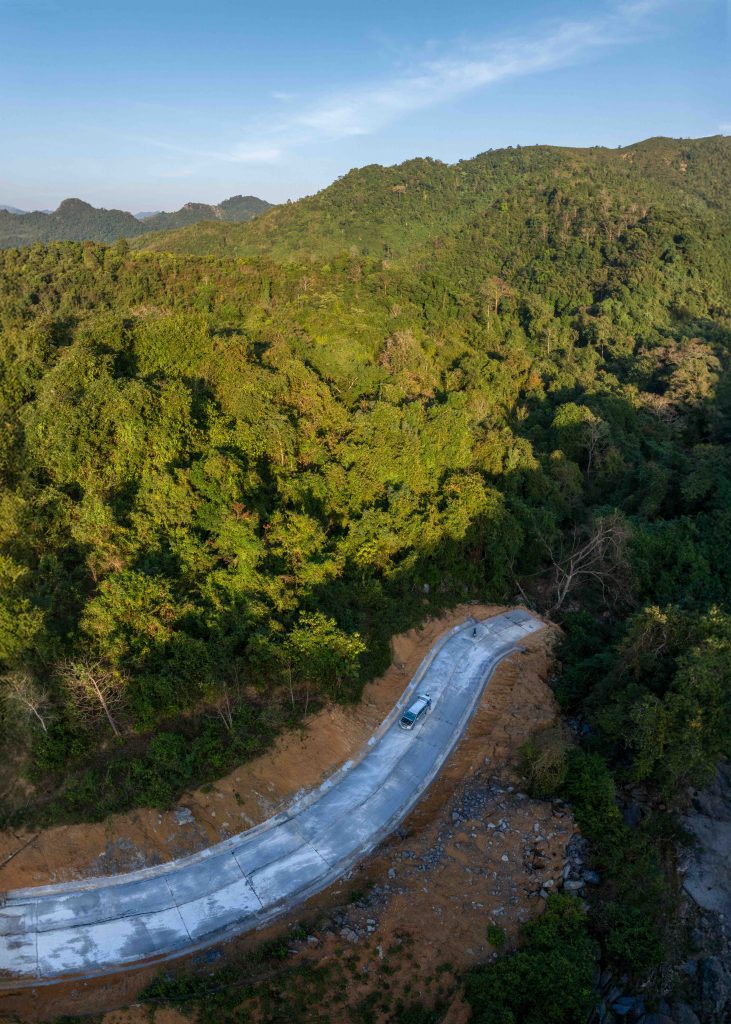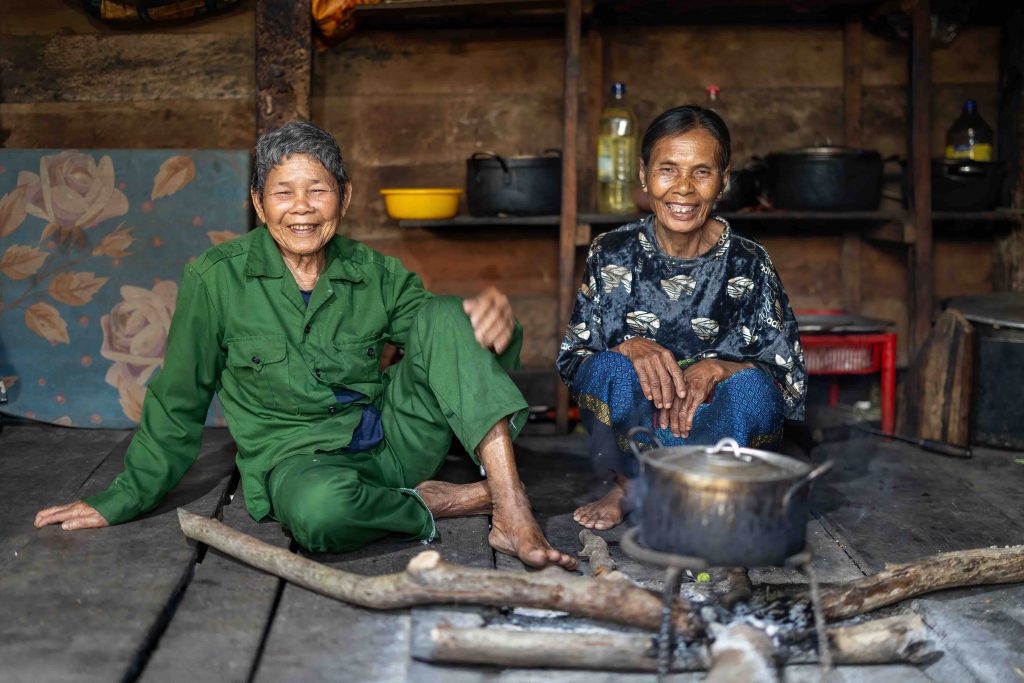Story: Nguyen Phuoc Bao Dan
Photos: Nguyen Phong
The journey to the western part Quang Tri is always full of fascinating discoveries. It’s hard to imagine that in this sun-scorched land, battered year-round by the Lao wind, roads rich with emotion weave through dry, rocky terrain. Nestled shyly within the vast wilderness, villages are steeped in the colors of indigenous culture.

Hunting clouds over Sa Mu Pass
Located on the western branch of the Ho Chi Minh Trail, Sa Mu Pass sits at an altitude of 1,400 meters, stretching 20 kilometers along the Vietnam-Laos border. Its terrain is rugged and challenging.
From Khe Sanh town, the center of Huong Hoa district in Quang Tri province, you pass through golden hills of wild sunflowers in Huong Phung commune to reach the foot of Sa Mu Pass, near Chenh Venh village. The name Sa Mu comes from Xe Samu Stream, which flows into the Se Bang Hien River—a waterway that runs backward toward Laos. Over time, the local Bru – Van Kieu people, observing natural phenomena, began calling the pass Sa Mu, meaning the intersection of earth and sky, where clouds descend. Along its 20-kilometer route, the pass is an ideal spot for cloud hunting, with long, winding slopes enveloped in a sea of floating, chilly clouds.
In the summer, it’s said that the weather in Sa Mu Pass can resemble “four seasons in a single day”. In the early morning, mountain winds stir the clouds, evoking the crisp chill of spring. By noon, the golden sun dries the fog, unveiling clear blue summer skies. As dusk approaches, the temperature drops, and the wind carries hints of autumnal cool. When night falls, thick fog descends, and the air turns bitterly cold, as if winter has enveloped the pass.
Nature is full of wonders, and local people have found ways to harness it, establishing nurseries of endemic flowers suited to the unique climate atop the pass. The Bac Huong Hoa Science and Technology Research and Application Station is a fascinating stop, where you can admire the beauty of many tropical orchid species. Beyond the nursery, the primeval forest awaits, with ancient trees so large it takes several people to encircle the trunks, and networks of vines hanging like curtains among clouds of mist.

The tranquil, cool atmosphere, filled with birdsong and rustling leaves, creates an unforgettable experience as you traverse the slopes of Sa Mu Pass. As you descend into Huong Viet commune, the Se Bang Hien River, Ta Puong Waterfall, A Pai Valley, and the Brai limestone cave system await, each offering unique surprises.
Chenh Venh Village: A cultural gem in the wilderness
“Oh… Yàng of the East, Yàng of the West, Yàng of the clouds, Yàng of the mountains, Yàng of the forest, and Yàng of the rice… now the rice has been harvested, the soul of the rice has returned to the granary; the buffalo has been tied to the post, the pig has been slaughtered, the jars are filled with wine, and the villagers have gathered together… We invite the Yàng to take the tube of wine, eat a piece of pork, and a bowl of the first rice of the season… May the Yàng grant us a bountiful harvest next season, with full ears of rice, so that when it’s time to harvest, our baskets will overflow, our granaries will be full, and we will be unable to carry the bounty… Oh Yàng!”
Visiting Chenh Venh village at the end of the harvest season, you’ll have the chance to take part in the New Rice Ceremony of the Bru – Van Kieu community. The village chief invites the Sky God Yàng to join the feast, marking the start of vibrant cultural activities to celebrate the results of a long period of hard work.
After the ceremony, the entire village joyfully gathers to eat, drink, and converse. As the wine takes effect, the xa noat (call-and-response singing) begins, accompanied by the deep, warm tones of the Kha lui flute. Via the harmonious songs and flute music, the community prays for a prosperous harvest, the health of the villagers, and strength to overcome challenges.

For guests, on a chilly mountain night, enjoying dinner with the locals in a stilt house in Chenh Venh village is truly memorable. The meal features Doac soup, which the women prepare using river fish, salt, chili, Doac shoots and wild banana blossoms gathered from the fields. This hearty dish is the family’s main offering, served alongside grilled river fish and steamed dishes flavored with local eggplants. With a fragrant cup of wine, the richness of sticky rice, the spiciness of chili, the bitterness of wild shoots, the sweetness of Doac or banana blossoms, and the aroma of river fish, the meal becomes a bond that ties family members together and welcomes visitors. It can be said that this experience is essential to truly understanding the culinary culture of villagers in Chenh Venh.
For generations, the local Bru – Van Kieu people have called their village by the name of the nearby waterfall, Chenh Venh Falls, located near the foot of Sa Mu Pass. The name Chenh Venh evokes a sense of instability, like the drifting clouds atop Sa Mu Pass, yet the villagers’ lives are stable and warm. Once entirely dependent on the forests, the Bru – Van Kieu villages now farm wet rice. They have worked hard to overcome poverty by protecting the forest and their living environment.
The people of Chenh Venh village are making use of the forest to develop community-based ecotourism, transforming their stilt houses into charming homestays and creating paths to the waterfall and Sa Muoi Hill atop Sa Mu Pass, areas once used for grazing and farming.
Visitors to Chenh Venh village are captivated by the gazes and smiles of young local women, dishes rich in forest flavors, and strong Doac wine. Crossing Sa Mu Pass to reach out and touch the clouds, you will experience the wonders of nature, gain insight into the culture and people of the highlands, and discover that western Quang Tri holds many new and fascinating treasures.










